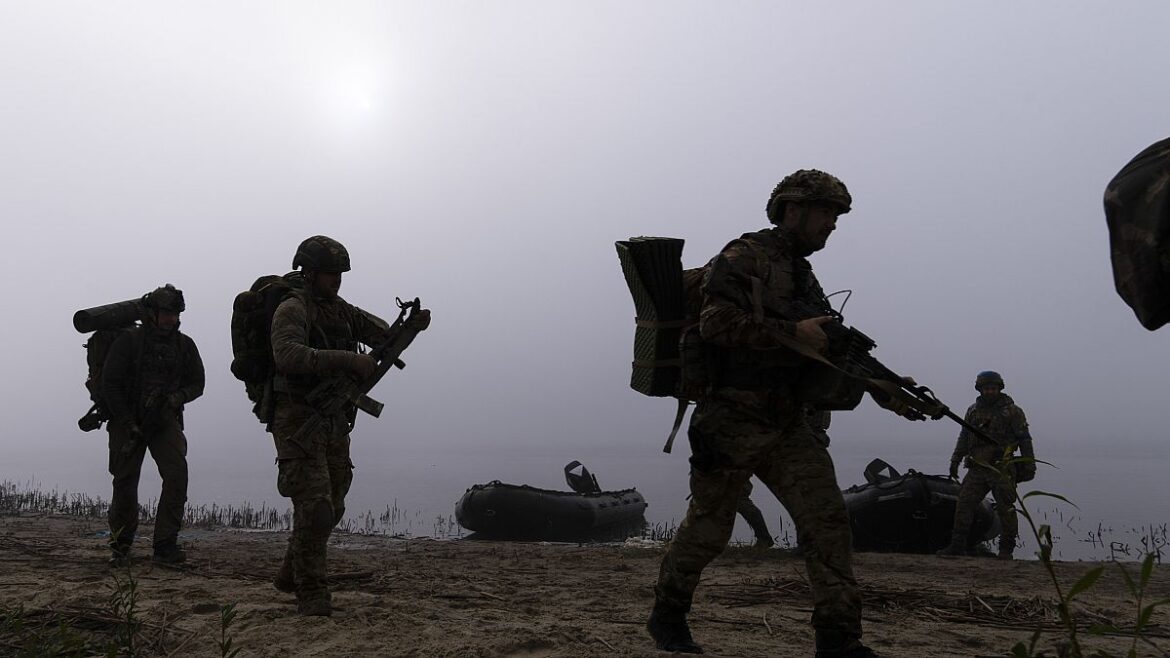After more than 1,000 days of war, Russian forces now control about a fifth of Ukrainian territory.
At the start of the week, the thousandth day of Russia’s invasion of Ukraine – the largest European conflict since World War II – has been reached.
Nearly three years later, significant missile and drone attacks continue to target main energy infrastructure Ukrainians and cost the lives of many civilians.
Moscow’s war of aggression is spending enormous quantities of weapons and human lives to make modest but steady territorial gains around the fifth of Ukraine it already controls.
Since the start of the war in February 2022, Kyiv has, however, achieved significant victories thanks to several counter-offensives. Ukrainian forces have thus pushed Russian troops beyond the Dnipro River, in the east of the country, and even launched an incursion into the Russian region of Kursk in mid-2024.
Despite these efforts, Russia retains control of entire parts of eastern Ukraine, notably the regions of Luhansk, Donetsk, Zaporizhzhia, Kherson as well as Crimea, annexed in 2014. After two years of stagnation on the front lines, the war is now at a stalemate.
The war in Ukraine has displaced millions of people seeking asylum across Europe.
On the 1000th day of the conflict, the United Nations humanitarian coordinator, Matthias Schmale, highlighted the heavy price paid by civilians: more than 2,000 attacks hit health facilities and two million homes damaged.
Nearly 40% of Ukraine’s population now depends on humanitarian aid.
The Russian economy, for its part, experienced growth of 4.4% in the second quarter of 2024 and the country currently has a low unemployment rate of 2.4%.
Economic growth and continued oil and gas exports have increased government revenue despite Western sanctions and the capping of the price of Russian oil at $60 (€57).
This cap – enforced by prohibiting Western insurers and shippers from processing oil sold above the limit – has been circumvented by Moscow through its tanker fleet and alternative insurance arrangements. According to experts, these measures allowed the Kremlin to continue to profit from its oil exports.
In a new report, researchers from Harvard University and the Peterson Institute for International Economics say that Russia was able to prepare for financial penalties thanks to lessons learned from sanctions imposed in 2014 after the invasion of Crimea.
Since the Russian invasion began in February 2022, Washington has provided more than $56.2 billion (€53.4 billion), as well as significant humanitarian and financial aid, to Ukraine. Total US support amounts to almost 85 billion euros, making it the largest global donor to Kyivaccording to the Kiel Institute for the World Economy.
Denmark, however, comes out on top in terms of aid relative to national GDP, with the Scandinavian country devoting 1.86% of its economy to supporting Ukraine, while the United States ranks 17th in this regard.
However, the situation could change radically, because US President-elect Donald Trump has pledged to significantly cut US aid to Ukraine.



